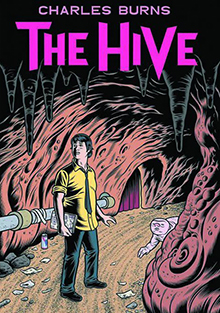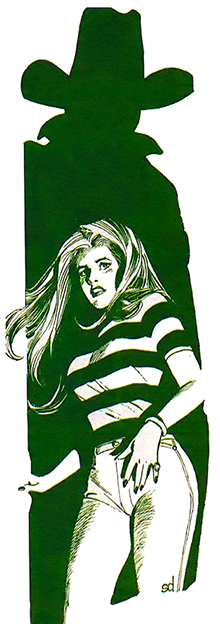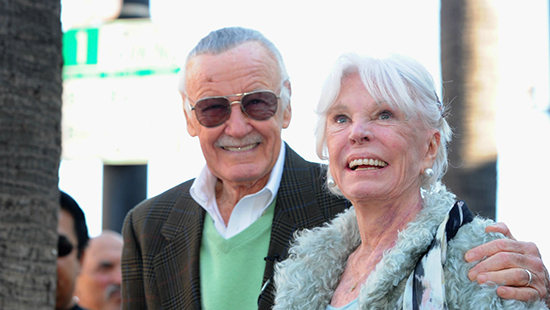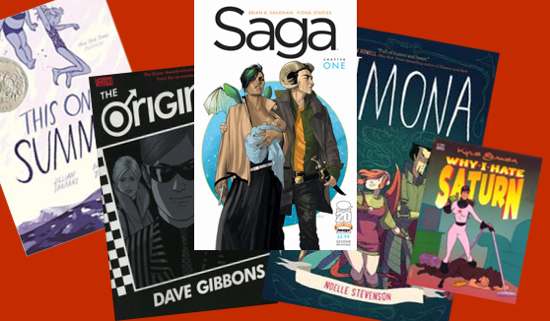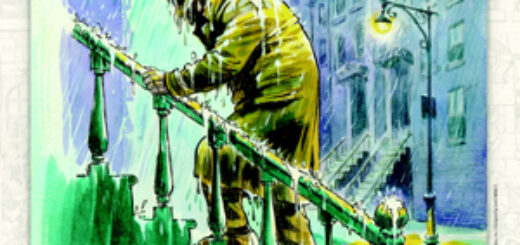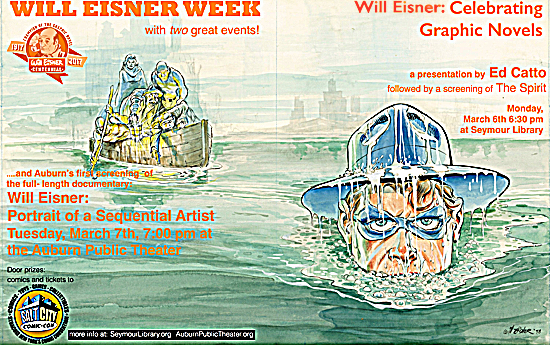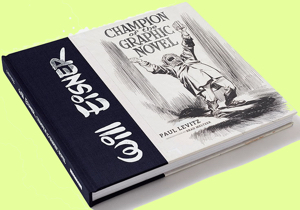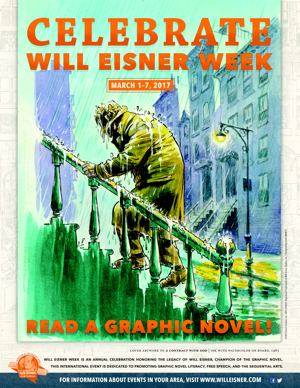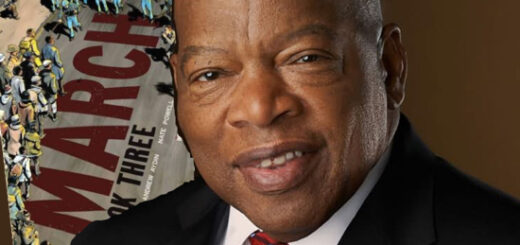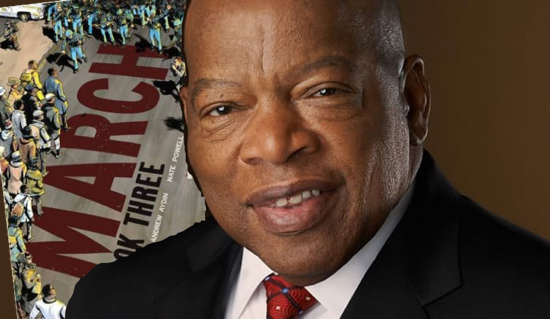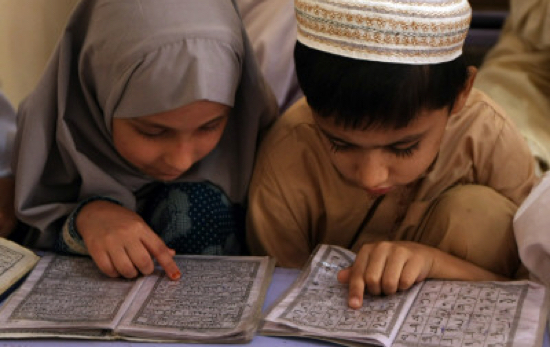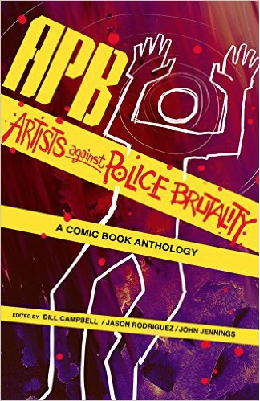Ed Catto: Great Graphic Novels, Old and New
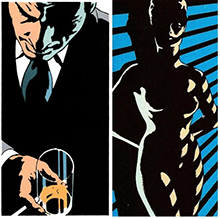 There’s a peculiar mix of older graphic novels and new graphic novels in our home right now. The new stuff is all part of a top-secret project I’m working on with my daughter, Tess. We can’t let the cat out of the bag yet, but you can check out her showcase of street art for the sneak peek tease. (And now that I think about it, who even puts cats into bags ?!?)
There’s a peculiar mix of older graphic novels and new graphic novels in our home right now. The new stuff is all part of a top-secret project I’m working on with my daughter, Tess. We can’t let the cat out of the bag yet, but you can check out her showcase of street art for the sneak peek tease. (And now that I think about it, who even puts cats into bags ?!?)
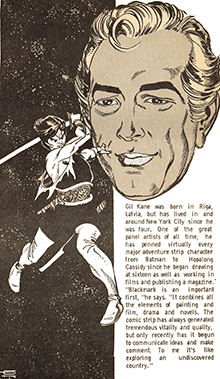
I’m struck by the wide variety of engaging, superlative creative endeavors we cram under the umbrella term “graphic novel.” While there’s one line of thinking that argues Geek Culture has outgrown the phrase “graphic novel,” it’s still handy and flexible enough for hardcore fans, casual fans, librarians, and bookstore owners.
Here are a few of the so-called Old Graphic Novels floating around here:
- Fiction Illustrated Vol. 3 featured Chandler and was originally presented as “Steranko’s first visual novel, a ground-breaking blend of pictures, words and graphic design…”. It’s a gripping noir mystery with a stylish sense of visual design. I enjoy it more every time I re-read it. There are so many instances when you could say that Jim Steranko is at his best and this is one of them.
 Gil Kane’s Blackmark is a sci-fi/sword and sorcery thriller that was first published as a Bantam paperback in 1971. Veteran comic artist Kane told this story with illustrated panels, captions, and only the occasional word balloon. Interestingly, with eerily parallels to today’s willful ignorance of climate change, this adventure takes place in a time when “Science is abominated, its secrets buried, its last adherents scourged and cast out by the people…” And the results weren’t pretty. Even when rendered by Gil Kane.
Gil Kane’s Blackmark is a sci-fi/sword and sorcery thriller that was first published as a Bantam paperback in 1971. Veteran comic artist Kane told this story with illustrated panels, captions, and only the occasional word balloon. Interestingly, with eerily parallels to today’s willful ignorance of climate change, this adventure takes place in a time when “Science is abominated, its secrets buried, its last adherents scourged and cast out by the people…” And the results weren’t pretty. Even when rendered by Gil Kane.- The Stars My Destination was an award-winning novel by Golden Age Green Lantern writer Alfred Bester, but for many, it really came to life when Howard Chaykin and Bryon Preiss collaborated on the graphic novel version. It’s a detailed adventure that expects the reader to keep up from the get-go. Chaykin, as you probably know, has a rich history of providing topnotch comics and graphic novels. He shows no sign of slowing down as he continues with his provocative The Divided States of Hysteria, published by Image.
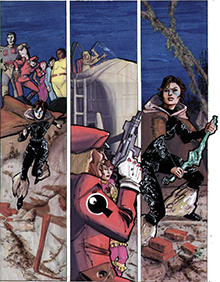 And just so you don’t think I’m too enamored with the past, here are a few of the Newer Graphic Novels scattered around here:
And just so you don’t think I’m too enamored with the past, here are a few of the Newer Graphic Novels scattered around here:
- Emil Ferris rocked the comics world last year with her debut graphic novel, My Favorite Thing is Monsters. It’s a wild ride by an unconventional, yet monstrously (sorry, couldn’t resist) talented creator. It was instantly talked about and then difficult to get. Now it’s available everywhere. With her clever illustrations and natural storytelling ability, Ferris shows readers how to create something spectacular and incorporate some of your favorite things along the way,
 Charles Burns isn’t really the David Lynch of comics, but I can see why you might think that. His work is often confusing, dense and just a little bit creepy. As a reader, however, you feel that he would never take the easy way out. Burns engages his audience in a complicated covenant based on a respect for intelligence and his making-it-look easy skills. His 2012 The Hive is part of the trilogy but it stands well enough on its own. Of particular note to lovers of old comics, Burns absolutely nails the zeitgeist of old DC romance comics and John Romita romance art in particular.
Charles Burns isn’t really the David Lynch of comics, but I can see why you might think that. His work is often confusing, dense and just a little bit creepy. As a reader, however, you feel that he would never take the easy way out. Burns engages his audience in a complicated covenant based on a respect for intelligence and his making-it-look easy skills. His 2012 The Hive is part of the trilogy but it stands well enough on its own. Of particular note to lovers of old comics, Burns absolutely nails the zeitgeist of old DC romance comics and John Romita romance art in particular.- Francisco Francavilla is absurdly likable as both a person and an artist. He’s hard-working, optimistic and personable when you meet him. Artistically, he uses his creations to embrace everything he loves and then wraps it all up with innovative design and unexpected color. You may be enjoying his current work from Dynamite on Will Eisner’s The Spirit: The Corpse Makers. His latest Graphic Novel, Black Beetle: Kara Bocek is a collection of short installments, originally appearing in Dark Horse Presents, featuring Francavilla’s own pulp hero.

 Jim Henson’s Tale of Sand, as realized by Ramon K. Perez, came out a few years ago and I got my copy as part of the swag bag at the Baltimore Comic-Con award ceremony. (As an aside, the Baltimore Comic-Con just held the first annual Ringo Awards, which will become the new awards ceremony at this well-respected comic-con. I heard it all went very well. Kudos to all!) Tale of Sand is a skillfully rendered tale full of compelling moxie.
Jim Henson’s Tale of Sand, as realized by Ramon K. Perez, came out a few years ago and I got my copy as part of the swag bag at the Baltimore Comic-Con award ceremony. (As an aside, the Baltimore Comic-Con just held the first annual Ringo Awards, which will become the new awards ceremony at this well-respected comic-con. I heard it all went very well. Kudos to all!) Tale of Sand is a skillfully rendered tale full of compelling moxie.
And, for a graphic novel that’s A Little Bit Old and a Little Bit New, let me offer this one up:
- Classic Comics Press just released Kelly Green: The Complete Collection by Stan Drake and Leonard Starr. The hardcover collects five Kelly Green graphic novels from the 80s. As a bonus, it also contains one story that was never printed in English, The Comic-Con Heist, that’s all about Geek Culture. These adventures are sexy thrillers with realistic, sexy art by Starr at top of his creative game.
So many great things to read. I’ve got to read fast in order to also get to my Fast Company and Inc. Magazine.

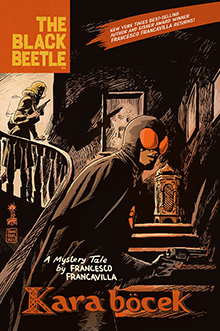
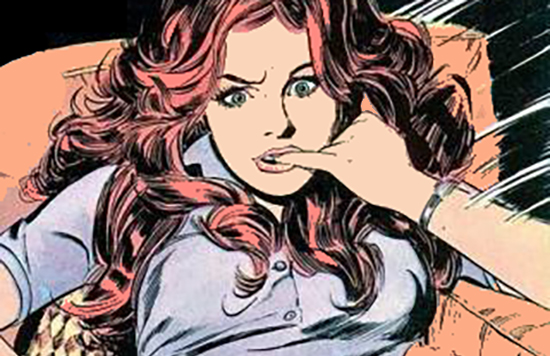
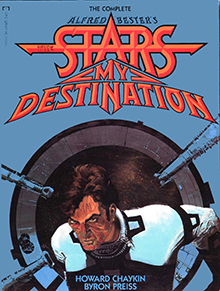 Gil Kane’s Blackmark is a sci-fi/sword and sorcery thriller that was first published as a Bantam paperback in 1971. Veteran comic artist Kane told this story with illustrated panels, captions, and only the occasional word balloon. Interestingly, with eerily parallels to today’s willful ignorance of climate change, this adventure takes place in a time when “Science is abominated, its secrets buried, its last adherents scourged and cast out by the people…” And the results weren’t pretty. Even when rendered by Gil Kane.
Gil Kane’s Blackmark is a sci-fi/sword and sorcery thriller that was first published as a Bantam paperback in 1971. Veteran comic artist Kane told this story with illustrated panels, captions, and only the occasional word balloon. Interestingly, with eerily parallels to today’s willful ignorance of climate change, this adventure takes place in a time when “Science is abominated, its secrets buried, its last adherents scourged and cast out by the people…” And the results weren’t pretty. Even when rendered by Gil Kane.